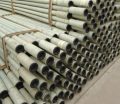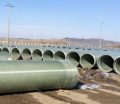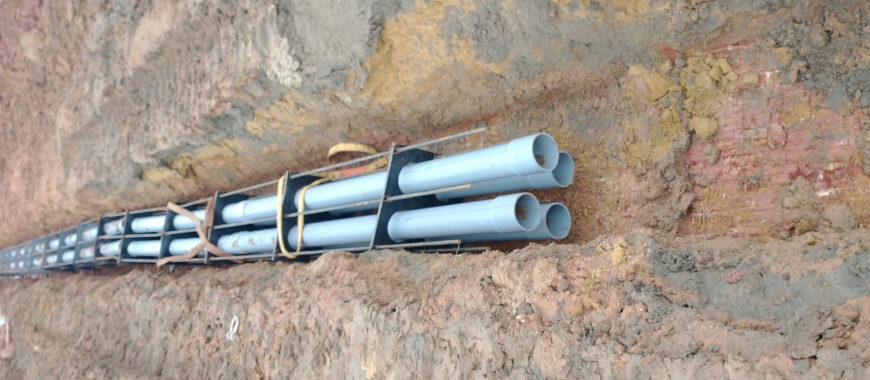
The frp pipe pressure rating refers to the maximum internal pressure that a fiberglass-reinforced plastic (FRP) pipe can safely handle without failing. This rating is critical for ensuring the pipe’s performance in industrial applications, where high-pressure fluids or gases are transported. The frp pipe pressure rating depends on factors such as the pipe’s wall thickness, resin type, and the specific operating conditions it will face. FRP pipe pressure rating: 50–150 psi (full vacuum), a durable steel alternative with ratings well above maximum requirements. GangLong Fiberglass designs FRP pipes with pressure ratings that meet industry standards, providing reliable and safe solutions for applications requiring high strength and durability under varying pressures.
Simplifying Your Life: Key Functionalities
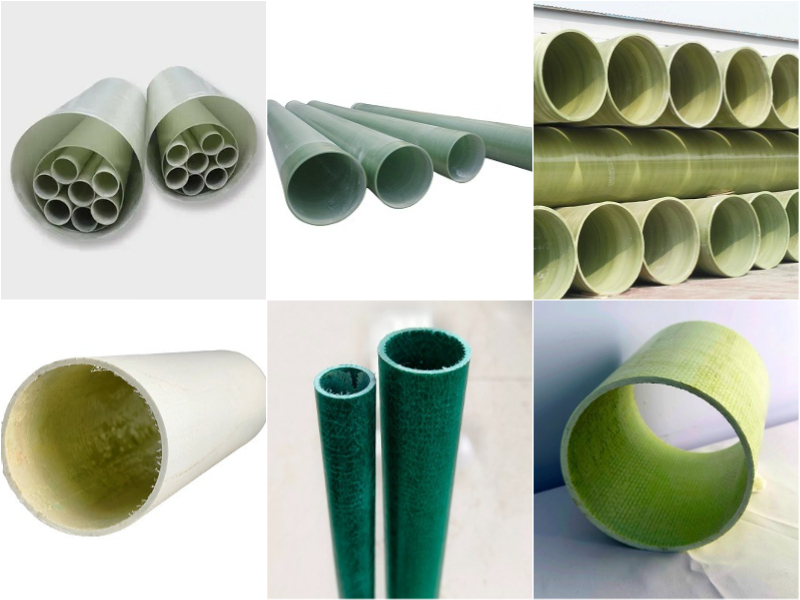
| Attributes | Details |
|---|---|
| Place of Origin | Hebei, China |
| Brand Name | GangLong Fiberglass |
| Product Name | FRP Pipe |
| Material | Fiberglass Reinforced Plastic |
| Technology | Pultrusion |
| Surface Treatment | Smooth, Plastic Coating, Painting, Sandblasting |
| Processing Services | Uncoiling, Forming, Welding, Punching, Cutting |
| Color | Customized Color |
| Shape | Customized Shape |
| Size | Customized Size |
| Thickness | Customized Thickness |
| Length | Customized Length |
| Quality | High Quality |
| OEM | OEM Accepted |
| Pressure Rating | 0.1MPa, 0.6MPa, 1.0MPa, 1.6MPa, 2.5MPa |
| Grade | 2500PA, 5000PA, 10000PA |
| Absolute Roughness Range | 0.008mm |
| Features | Durable, High Strength, Light Weight |
| Certificate | ISO9001 |
| Application | Construction, Others |
| Port | All Major Ports |
| Packing Details | Packed in Bubble Film or as per Customer Requirement |
| Sales Unit | Single Item |
| Supply Capacity | 200 Pieces per Day |
FRP Pipe Pressure Rating: Essential for Reliable System Performance
The pressure rating of Fiberglass Reinforced Plastic (FRP) pipes is a critical factor that determines their safe and effective use in various industrial applications. FRP pipes are known for their high strength-to-weight ratio, corrosion resistance, and adaptability to harsh environments, but understanding the FRP pipe pressure rating is crucial to ensure the pipe’s long-term performance and safety. Additionally, the density of FRP pipe is an important factor that influences its pressure rating and overall mechanical properties. A higher density typically indicates greater strength and durability, allowing the pipe to withstand higher pressures without compromising its integrity.This rating dictates the maximum internal pressure the pipe can withstand without failure and helps engineers and contractors select the right materials for their projects.
In this article, we’ll explore what FRP pipe pressure rating means, the factors that influence it, and how to use pressure ratings to guide your pipe selection for different systems.
What Is FRP Pipe Pressure Rating?
FRP pipe pressure rating refers to the maximum internal pressure that a pipe can handle under normal operating conditions without risk of failure or deformation. This rating is typically measured in pounds per square inch (psi) or bars, with one bar being approximately 14.5 psi. Understanding this rating is essential because it directly impacts the safety and reliability of a piping system. Using a pipe with a pressure rating below the system’s requirements can lead to cracks, leaks, or catastrophic failure.
Several factors affect the pressure rating of FRP pipes, including the type of resin used in the construction, the thickness of the pipe walls, and the overall diameter of the pipe. For example, pipes manufactured by GangLong Fiberglass are designed with a range of pressure ratings to meet the specific needs of various industries, such as chemical processing, water treatment, and oil and gas operations.
FRP Pipe Pressure Rating Guide: Tips for Selection
When selecting an FRP pipe for a specific application, it’s important to keep the following tips in mind to ensure the right pressure rating is chosen:
Review System Requirements
Before selecting an FRP pipe, thoroughly review the operating pressure requirements of the system. This includes understanding both the normal operating pressure and any potential pressure surges that may occur. Ensure that the chosen pipe has a pressure rating that exceeds the system’s highest pressure demands.
Consult Manufacturer Specifications
Always consult the manufacturer’s specifications for the FRP pipe pressure rating, wall thickness, and other relevant data. Manufacturers like GangLong Fiberglass provide detailed pressure charts and dimensions that make it easier to match the correct pipe to the application.
Use a Pressure Safety Margin
It’s a good practice to build in a safety margin when selecting a pipe’s pressure rating. For example, if the system is expected to operate at 200 psi, it may be beneficial to select a pipe rated at 250 psi or higher to account for any unexpected pressure fluctuations.
Where to Find an FRP Pipe Catalogue PDF
For detailed information on FRP pipe pressure ratings, dimensions, and other specifications, an FRP pipe catalogue in PDF format is an invaluable resource. Manufacturers like GangLong Fiberglass offer comprehensive catalogues that include all the technical details you need to make an informed decision. These catalogues typically provide information on FRP pipe data, allowing you to select the correct pipe for your specific needs.
An FRP pipe catalogue PDF can often be found on the manufacturer’s website or through their customer service department. Accessing these documents ensures you have up-to-date information on available products and their specifications, making it easier to choose the right FRP pipe for your project.
How About Using an FRP Pipe Catalogue PDF for Accurate Selection?
An FRP pipe catalogue PDF is a valuable resource for engineers and contractors, providing all the necessary information to make an informed decision about pipe selection. These catalogues typically include dimensions, pressure ratings, chemical resistance data, and more, allowing you to compare different products and find the best match for your project.
GangLong Fiberglass offers a comprehensive FRP pipe catalogue in PDF format, which includes detailed specifications for their full range of products. This catalogue provides everything you need to ensure that the pipes you choose will meet the specific demands of your system.
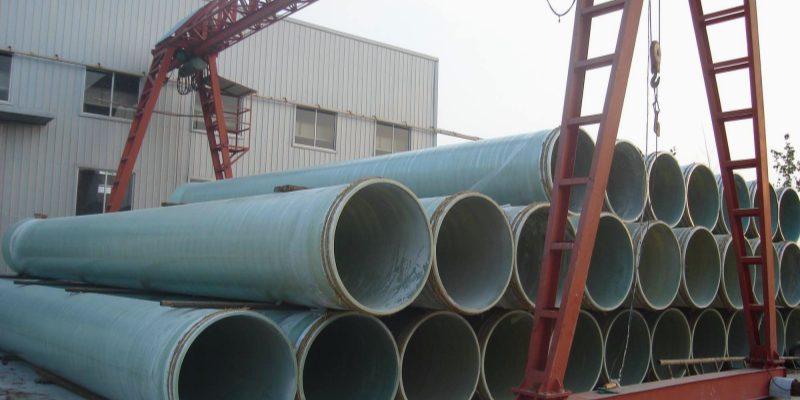
What Are FRP Pipe Specifications and How Do They Impact Selection?
FRP Pipe Specifications
FRP pipe specifications provide essential details about the pipe’s performance, such as FRP pipe pressure rating, chemical resistance, temperature tolerance, and mechanical strength. These specifications help ensure that the correct pipe is selected for specific applications, guaranteeing the system’s safety and efficiency.
Chemical Resistance
FRP pipes are ideal for transporting corrosive fluids, with chemical resistance depending on the resin used. Vinyl ester resins offer higher resistance to acids and alkalis, while polyester resins are suitable for less aggressive chemicals. Ensuring the right chemical resistance is crucial to prevent pipe degradation.
Temperature Tolerance
FRP pipes’ temperature tolerance varies based on the resin. Epoxy resins can withstand higher temperatures than polyester, making them ideal for high-temperature applications. Choosing pipes with proper temperature tolerance ensures long-term reliability and maintains the pipe’s integrity under varying operational conditions.
Pressure Ratings
Pressure ratings indicate the maximum internal pressure an FRP pipe can withstand. Epoxy-based FRP pipes generally have higher pressure ratings than polyester-based ones, making them suitable for high-pressure systems. Selecting a pipe with the correct pressure rating is critical to preventing failures and ensuring system stability.
Mechanical Strength
The mechanical strength of FRP pipes refers to their ability to resist external forces like impact and bending. FRP pipes offer a high strength-to-weight ratio, making them both durable and lightweight. For applications under high mechanical stress, selecting pipes with higher strength ratings is essential for long-term durability.
UV Resistance
UV resistance is essential for FRP pipes that are exposed to outdoor conditions. Prolonged exposure to UV light can cause the resin to degrade, resulting in brittleness and a shortened lifespan. To prevent this, UV inhibitors are commonly added, allowing the pipes to endure extended sunlight exposure without substantial deterioration, especially in outdoor or exposed environments.
Corrosion Resistance
FRP pipes are highly resistant to corrosion from chemicals, salts, and gases, making them ideal for corrosive environments. This resistance extends the lifespan of piping systems, reducing maintenance and replacement costs. Selecting pipes based on their corrosion resistance ensures long-term reliability in harsh conditions.
Environmental Considerations
Environmental conditions, such as moisture and temperature fluctuations, must be considered when selecting FRP pipes. In humid or outdoor environments, pipes with enhanced resistance to these conditions will perform better. Choosing the right pipe based on environmental factors ensures durability and minimizes degradation risks.
The Key of Resin Selection for FRP Pipe Pressure Rating
Key Considerations
Resin selection is one of the most important factors influencing the frp pipe pressure rating. Different resins offer varying levels of mechanical strength and resistance to environmental factors, which directly affect how much pressure the pipe can handle. The three main types of resins used in FRP pipe construction are polyester, vinyl ester, and epoxy.
Polyester Resins
These resins are widely used for standard applications because they provide good strength at an economical price. FRP pipes made with polyester resins are suitable for systems with moderate pressure requirements. However, polyester resins are not recommended for applications with high pressures or aggressive chemicals.
Vinyl Ester Resins
Vinyl ester resins are ideal for applications that require higher pressure ratings and greater chemical resistance. These resins can handle more demanding conditions, including exposure to corrosive fluids and higher operating pressures. Pipes made from vinyl ester resins can tolerate higher stress, making them suitable for industrial processes where pressure levels fluctuate.
Epoxy Resins
Epoxy-based FRP pipes offer the highest pressure ratings and are used in extreme conditions. Epoxy resins provide excellent strength and durability, allowing the pipe to withstand high pressures and temperatures. GangLong Fiberglass offers epoxy resin-based FRP pipes for applications that require the highest FRP pipe pressure ratings, such as in oil refineries and high-pressure fluid transport systems.
How about the Role of Pipe Wall Thickness in FRP Pipe Pressure Rating?
The thickness of the pipe wall is another major factor determining the frp pipe pressure rating. Thicker pipe walls provide greater resistance to internal pressure, helping the pipe withstand higher pressure without deformation or failure. The wall thickness of FRP pipes is often designed to meet specific pressure requirements based on the industrial application and operating environment.
Standard Wall Thickness: Pipes with standard wall thickness are typically used for applications with lower or moderate pressure requirements. These pipes are well-suited for less demanding environments, such as water distribution systems, where the internal pressure is relatively low and stable.
Increased Wall Thickness: For applications with higher pressures, FRP pipes are manufactured with increased wall thickness to provide additional strength. Pipes with thicker walls are designed to handle the increased stress caused by high-pressure fluids or gases. GangLong Fiberglass manufactures FRP pipes with customizable wall thickness options to match the exact pressure requirements of each project, ensuring safe and reliable performance under pressure.
What Are the Operating Conditions That Affect FRP Pipe Pressure Rating?
The frp pipe pressure rating is not only determined by the resin type and wall thickness but also by the specific operating conditions under which the pipe is used. These conditions can greatly influence how well the pipe handles pressure over time. Factors such as fluid type, operating temperature, and external environmental conditions all play a role in determining the appropriate pressure rating for an FRP pipe.
Fluid Type
The type of fluid being transported through the FRP pipe is a key consideration for determining the frp pipe pressure rating. Certain fluids, such as corrosive chemicals or abrasive slurries, can place additional stress on the pipe, reducing its pressure capacity. Pipes that will be used to transport aggressive fluids must be designed with both chemical resistance and pressure rating in mind. GangLong Fiberglass provides FRP pipes that are engineered to handle a variety of fluid types while maintaining high pressure resistance.
Operating Temperature
The temperature of the fluid inside the pipe can also affect the FRP pipe pressure rating. As the temperature increases, the strength of the pipe material may decrease, reducing the pipe’s ability to handle pressure. Therefore, it is essential to select an FRP pipe that is rated for both the pressure and temperature conditions of the system. FRP pipe temperature limits must be considered, as high-temperature environments require FRP pipes with specialized resins and thicker walls to ensure safety and reliability.
External Environmental Conditions
In some applications, the external environment can also impact the frp pipe pressure rating. For example, pipes used outdoors may be subjected to extreme temperature fluctuations, UV exposure, or mechanical stress. In these cases, it’s important to choose an FRP pipe that is not only rated for the internal pressure but also designed to withstand external environmental factors, including the FRP pipe roughness factor. Selecting a pipe with an appropriate roughness factor ensures optimal flow performance and minimizes friction losses, contributing to the overall efficiency of the system. GangLong Fiberglass offers FRP pipes with protective coatings and custom designs to ensure they perform reliably in harsh external conditions.
What Are the Advantages of GangLong Fiberglass FRP Pipes with High Pressure Ratings?
GangLong Fiberglass is committed to producing FRP pipes that meet the most demanding pressure requirements across various industries. The company’s FRP pipes are engineered to provide superior strength, durability, and resistance to pressure, ensuring reliable performance even in the most challenging conditions.
Customizable Solutions
GangLong Fiberglass provides a wide range of FRP pipes, offering various sizes, wall thicknesses, and resin formulations to meet the specific requirements of different projects. This flexibility allows clients to select the ideal product tailored to their unique pressure conditions, environmental factors, and operational demands. Whether it’s for high-pressure systems, corrosive environments, or high-temperature applications, GangLong Fiberglass ensures that the pipes are designed to meet the exact specifications needed for optimal performance and safety.
Industry Compliance
At GangLong Fiberglass, all FRP pipes are manufactured in strict adherence to international industry standards, ensuring they are suitable for a wide variety of applications. These pipes are rigorously tested to meet the required pressure ratings and performance specifications, providing clients with the assurance that they are investing in a product that meets the highest safety, quality, and operational standards. The commitment to compliance with these standards ensures that GangLong Fiberglass FRP pipes perform reliably and safely in even the most demanding environments.
Long-Term Durability
GangLong Fiberglass FRP pipes are built to withstand the harshest conditions, offering exceptional durability over long periods. With their high-pressure capacity, resistance to corrosion, and ability to endure environmental stressors such as temperature fluctuations and chemical exposure, these pipes are engineered for longevity. This durability significantly reduces the need for frequent replacements and minimizes ongoing maintenance costs, making them a cost-effective solution for industries seeking reliable, low-maintenance piping systems that will perform well over the years.
GangLong Fiberglass designs and manufactures FRP pipes with high FRP pipe pressure ratings and FRP pipe fire rating that are tailored to the needs of these and other industries, ensuring safe and efficient operation in pressure-critical environments. By selecting FRP pipes from GangLong Fiberglass, industries can benefit from high-performance products that meet their specific pressure requirements, ensuring safe and reliable operation in pressure-sensitive applications.
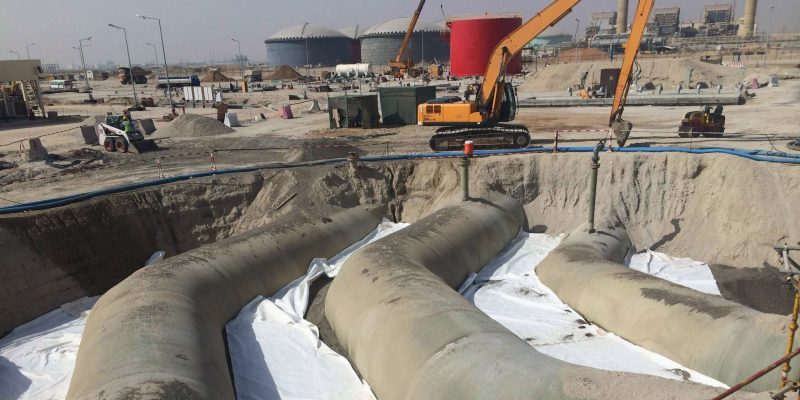
How to Install Fiberglass Insulation Around Outlets Correctly
FRP Pipe Pressure Ratings: Application Across Different Industries
Fiberglass Reinforced Plastic (FRP) pipes are widely used in various industries due to their durability, corrosion resistance, and ability to handle different types of fluids. Each industry has distinct requirements for pressure ratings depending on the specific conditions of the application. Understanding how pressure ratings work in different environments ensures the longevity and safety of the piping systems. Below is an expanded view of how FRP pipe pressure ratings are applied across several key sectors:
Chemical Processing
In chemical processing plants, where the transportation of aggressive and corrosive chemicals is common, FRP pipes with high-pressure ratings are essential. These pipes are designed to handle harsh fluids under high-pressure conditions, preventing potential failures like leaks or bursts. Advanced resins, such as vinyl ester, are often used in these applications due to their superior chemical resistance and high-pressure tolerance. Properly rated FRP pipes help maintain safety standards by ensuring the system remains intact even in the presence of aggressive substances and high operational pressures.
Water Treatment
Water treatment facilities require different pressure ratings depending on the type of water being handled—raw, treated, or wastewater. In low-pressure systems, such as the distribution of treated water, FRP pipes rated at around 100 psi may suffice. However, high-pressure systems, such as those used in the transportation of raw or wastewater, may need pipes rated at 300 psi or higher to ensure proper flow without failure. FRP pipes are particularly valuable in water treatment plants because they offer resistance to corrosion from water chemicals and are lighter, making them easier to handle and install.
Oil and Gas
In the oil and gas sector, FRP pipes are utilized in both onshore and offshore settings where high-pressure pipelines are required to transport fluids over long distances. These systems often operate under extreme conditions, including high pressures and corrosive environments. Epoxy-based FRP pipes are commonly selected for these applications due to their enhanced pressure handling capacity and resistance to harsh elements such as saltwater, acids, and high temperatures. Proper pressure ratings are critical in preventing pipeline ruptures and maintaining the flow of oil, gas, and other fluids in these high-stakes environments.
Power Plants and Industrial Complexes
Power plants and industrial complexes use FRP pipes in cooling systems, raw water intake, treated water delivery, and subaqueous or elevated pipes. In cooling systems, where the pressure can fluctuate depending on the water intake and discharge processes, FRP pipes must be rated to handle varying levels of pressure. The use of FRP pipes ensures a corrosion-resistant, durable, and lightweight option, reducing maintenance costs and extending the lifespan of the piping systems. Cooling water systems, gravity sewers, and outfalls also rely on pressure-rated FRP pipes to effectively manage the flow of fluids under different operational conditions.
Designing FRP Piping Fittings and Joints for Pressure Resistance
When designing FRP piping systems, the pipe itself is relatively straightforward to design in comparison to the fittings and joints. While the pressure-induced stresses in pipes are typically calculated using basic equations, FRP pipe pressure ratings must also be considered to ensure the pipe can withstand the required operational pressures. Fittings present a more complex scenario due to their unique geometry.
Stresses in Pipes
For a simple pipe under pressure, the stresses are calculated using the following formulas:
- Sh (Hoop stress): The stress exerted on the pipe walls in a direction perpendicular to the pipe’s axis.
- Sax (Axial stress): The stress acting along the length of the pipe.
- P (Pressure): The internal pressure exerted on the pipe.
- IDs (Inside diameter of structural wall): The pipe’s internal diameter.
- Ts (Thickness of structural wall): The thickness of the pipe wall.
The Complexity of Fittings
Fittings such as elbows, tees, and reducers have a much more complicated geometry, which results in higher local stresses that exceed those calculated for simple straight pipes. These higher stresses cannot be accurately predicted using the basic equations for pipe stress and require more advanced methods to account for them. The most common solution for this is the introduction of a “fudge factor,” known as the pressure stress multiplier (denoted by m). This factor adjusts the calculation for the higher stresses within the fitting compared to those in a straight pipe.
Pressure Stress Multiplier (m)
The pressure stress multiplier is essentially a ratio of the maximum pressure stress in a fitting to the stress in a pipe of equal thickness. For example, in a long-radius elbow, the hoop stress can be 1.25 times higher than that in a straight pipe, so the pressure stress multiplier for this fitting would be m = 1.25. To ensure similar safety against bursting, the elbow would need to be 1.25 times thicker than the pipe. However, this rule holds true only if the pipe and the elbow are made from the same type of laminate. The actual thickness may vary depending on the specific strength properties of the laminates used in the fitting and the pipe.
Stress Distribution in FRP Fittings
Finite Element Analysis (FEA) provides a visual representation of the stress distribution within FRP fittings. For example, in a long-radius elbow, the hoop stress is greatest on the inner radius of the elbow and least on the outer radius. The FEA graphic clearly highlights this, with red areas indicating regions of higher stress and green areas representing regions of lower stress. The blue areas are found at the joints, where the laminate thickness is typically increased to enhance strength at these critical points.
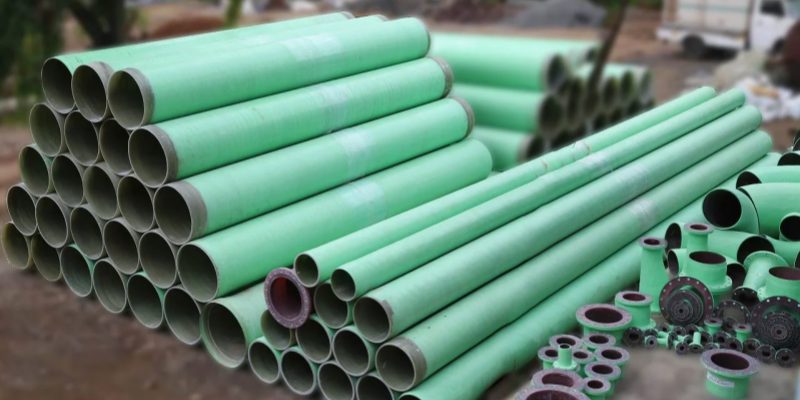
FRP Pipe Pressure Rating: Critical Considerations for Effective System Design
The FRP (Fiberglass Reinforced Plastic) pipe pressure rating is a key factor in ensuring that industrial piping systems function safely and efficiently. Understanding the pressure rating helps determine how much internal pressure an FRP pipe can handle without risk of failure, making it essential for applications in sectors such as chemical processing, water treatment, and oil and gas. Correctly selecting an FRP pipe with an appropriate pressure rating ensures that the pipe can handle the operating conditions it will be exposed to, preventing costly failures and enhancing the overall reliability of the system.
This guide explores in detail the factors that influence FRP pipe pressure rating, the relationship between pipe size and pressure tolerance, and how to use tools such as weight and dimension charts to choose the right pipe for your project.
The Importance of Testing for FRP Pipe Pressure Rating
Before an FRP pipe can be deployed in an industrial setting, it must undergo rigorous testing to ensure that it meets the specified frp pipe pressure rating. These tests verify that the pipe can handle the expected internal pressure without failing, deforming, or losing performance over time.
Hydrostatic Testing
One of the most common methods for testing the frp pipe pressure rating is hydrostatic testing. In this process, the pipe is filled with water or another liquid, and pressure is applied to simulate the operating conditions of the system. The pressure is gradually increased to a level higher than the expected operating pressure to test the pipe’s ability to withstand stress. If the pipe passes this test without leaking or deforming, it is certified as having met the required pressure rating.
Burst Testing
Burst testing is another method used to determine the maximum frp pipe pressure rating. This test involves applying pressure to the point where the pipe bursts or fails, providing a clear indication of the pipe’s upper pressure limit. Burst testing is useful for establishing safety margins and ensuring that the pipe can handle more than the intended operating pressure.
Long-Term Pressure Testing
In addition to short-term pressure testing, FRP pipes may also undergo long-term pressure testing to simulate the effects of continuous use over time. This test helps to identify any potential weaknesses in the pipe’s structure that could lead to failure after prolonged exposure to pressure. By simulating real-world operating conditions, long-term pressure testing ensures that FRP pipes are reliable for extended use.
GangLong Fiberglass conducts comprehensive pressure testing on all its FRP pipes to ensure they meet the highest industry standards for safety and performance.
Factors Influencing FRP Pipe Pressure Rating
Several factors determine the pressure rating of an FRP pipe, including the type of resin, the thickness of the pipe walls, and the pipe’s diameter. Each of these elements plays a critical role in the overall strength of the pipe and its ability to handle internal pressures.
Resin Type
The resin used in the construction of FRP pipes is one of the most important factors that influence the pressure rating. Different resins provide varying levels of strength, chemical resistance, and temperature tolerance, which in turn affects how much pressure the pipe can handle.
Standard FRP pipes, such as those manufactured by GangLong Fiberglass, are made from polyester resin, which is suitable for lower-pressure environments. For higher-pressure applications, vinyl ester or epoxy resins are typically used due to their superior strength and resistance to both high temperatures and harsh chemicals. Epoxy resins, for example, are known for their excellent durability and can handle more extreme operating conditions than standard polyester resins.
Pipe Wall Thickness
The thickness of the FRP pipe walls also plays a significant role in determining its pressure rating. Pipes with thicker walls are better able to withstand higher internal pressures. A pipe with a thicker wall has greater structural strength, reducing the risk of rupture or deformation when exposed to high pressures.
For instance, an FRP pipe with a 10-inch nominal diameter may offer wall thickness options from 3/8 inch to 1 inch, depending on the required pressure rating. Thicker walls typically provide higher pressure ratings, allowing the pipe to withstand greater internal forces.
GangLong Fiberglass offers a variety of pipe wall thicknesses tailored to specific pressure requirements, ensuring that the pipes meet the safety standards of various industries. Selecting the appropriate wall thickness ensures that the pipe performs reliably under the expected pressure loads.
Pipe Diameter
The diameter of the FRP pipe also affects its pressure rating. Larger diameter pipes have a greater internal surface area exposed to pressure, making them less resistant to high pressures compared to smaller-diameter pipes. Conversely, smaller pipes can generally handle higher pressures.
When designing a system, engineers must consider the relationship between diameter and pressure rating. For example, a pipe with a diameter of 4 inches may have a much higher pressure rating than a pipe with a diameter of 12 inches, even if both are made from the same resin and have similar wall thicknesses. This relationship underscores the importance of using an FRP pipe dimensions chart when planning a piping system.
How About Using FRP Pipe Dimensions Chart Effectively?
The FRP pipe dimensions chart is a crucial tool for engineers and project managers, providing essential information about pipe size, thickness, and pressure ratings. Understanding how to use this chart helps ensure that the correct pipe is selected for the system’s requirements.
Outer Diameter (O.D.)
The outer diameter (O.D.) is one of the most important measurements in an FRP pipe dimensions chart. The O.D. includes the thickness of the pipe walls and represents the total width of the pipe. Ensuring that the selected pipe’s O.D. fits with other system components, such as flanges or fittings, is crucial for proper installation.
Larger O.D. pipes generally have lower pressure ratings because of the increased surface area exposed to pressure. For instance, a pipe with a 24-inch O.D. will typically have a lower pressure rating than a pipe with a 4-inch O.D., even if both pipes are made from the same material and have similar wall thicknesses. Reviewing the O.D. on the dimensions chart ensures compatibility with the system’s pressure and size requirements.
Wall Thickness
As previously mentioned, the wall thickness of an FRP pipe is a key factor in its pressure rating. The dimensions chart typically lists several wall thickness options for each pipe diameter. Selecting the correct wall thickness ensures that the pipe can handle the expected internal pressure without risk of failure.
For example, an FRP pipe with a nominal diameter of 8 inches may have multiple thickness options, such as 1/4 inch, 3/8 inch, and 1/2 inch, with thicker walls offering higher pressure ratings. Consulting the dimensions chart allows engineers to choose the appropriate thickness to meet system requirements.
Pressure Rating
The pressure rating listed in the dimensions chart provides guidance on the maximum pressure the pipe can handle safely. Pressure ratings are typically given in psi or bars, with higher ratings indicating a pipe’s ability to withstand greater internal pressure.
When selecting an FRP pipe, it’s essential to choose a pressure rating that exceeds the expected operating pressure of the system. This safety margin accounts for potential pressure fluctuations or surges. For example, if the system operates at 150 psi, it is advisable to select a pipe rated for 200 psi to ensure safety and reliability.
FRP Pipe Weight Chart:Importance
In addition to the dimensions and pressure ratings, the weight of an FRP pipe is another important factor to consider during the selection process. The FRP pipe weight chart provides information on the weight of the pipe per unit length, which is essential for calculating the load-bearing requirements of the system.
Transportation and Installation
The weight of an FRP pipe affects its ease of transportation and installation. Lighter pipes are easier to handle and install, reducing labor costs and installation time. However, the weight of the pipe also impacts its strength and durability. Heavier pipes tend to have thicker walls and higher pressure ratings, making them better suited for demanding applications.
When using an FRP pipe weight chart, it’s important to balance the weight of the pipe with the system’s needs. For example, a pipe that is too heavy may require additional support structures, while a pipe that is too light may not provide adequate strength.
Structural Considerations
The weight of an FRP pipe also affects the structural integrity of the system. In applications where the pipes will be installed above ground or suspended, it’s important to ensure that the supporting structures can handle the weight of the pipes. The FRP pipe weight chart helps engineers calculate the total load on the system and design supports accordingly.
FAQs about Frp Pipe Pressure Rating
GRP (Glass Reinforced Plastic) pipes are categorized into different pressure classes based on their ability to withstand internal pressure. These pressure classes are typically expressed in bars, with one bar being equivalent to approximately 14.5 psi. The most common pressure classes for GRP pipes range from 6 bar (87 psi) to 32 bar (464 psi), depending on the design, wall thickness, and intended application. For instance, a 6-bar GRP pipe might be suitable for low-pressure water distribution, while a 16-bar or higher-rated GRP pipe could be used in industrial applications where higher pressure handling is necessary.
The pressure class of GRP pipes is determined by their mechanical strength, which is influenced by factors like the type of resin used, the reinforcement materials, and the thickness of the pipe walls. When selecting GRP pipes, it’s crucial to match the pressure class with the operating conditions of the system to ensure long-term reliability and safety. Manufacturer specifications and design standards, such as those from GangLong Fiberglass, should always be consulted to choose the correct pressure class for a particular application.
FRP (Fiberglass Reinforced Plastic) flanges are commonly used in industrial applications where corrosion resistance and lightweight materials are essential. The pressure rating of FRP flanges depends on factors such as the type of resin, the reinforcement material, the flange design, and the operational temperature. Typically, FRP flanges have pressure ratings that range from 150 psi to 300 psi, but in some cases, they can be engineered to handle higher pressures depending on the application.
The pressure rating also correlates with temperature; as the operating temperature increases, the pressure rating of the flange may decrease due to the material’s thermal expansion and potential softening of the resin. When selecting FRP flanges, it’s crucial to ensure the pressure rating matches the operational needs of the system. Always refer to manufacturer guidelines, like those provided by GangLong Fiberglass, to understand the limitations and performance characteristics of the flange under specific operating conditions.
The pressure rating of plastic pipes varies significantly based on the material, thickness, and intended application. For example, commonly used plastic pipes such as PVC (Polyvinyl Chloride) and HDPE (High-Density Polyethylene) have different pressure ratings. PVC pipes are generally classified into pressure ratings like Schedule 40 or Schedule 80, where Schedule 40 pipes can handle pressures up to 450 psi (pounds per square inch) at room temperature, while Schedule 80 pipes can handle higher pressures, sometimes exceeding 600 psi depending on the size and wall thickness. HDPE pipes, often used in water and gas distribution systems, have pressure ratings ranging from 100 psi to 160 psi or higher, depending on the pipe’s size and the standard it meets.
The pressure rating for plastic pipes is determined by the material’s strength and how it can withstand internal pressure without bursting or deforming. Different standards, such as ASTM or ISO, provide guidelines for determining the appropriate pressure rating based on the pipe’s diameter, wall thickness, and intended use.

As the editor of GangLong Fiberglass, I have years of experience and in-depth research, focusing on cable tray products, fiberglass solutions, and grille systems. I incorporate years of industry insights and practical experience into every content, committed to promoting the progress of the industry. At GangLong Fiberglass, my commitment is reflected in every product, from innovative cable trays to durable fiberglass solutions and sturdy grille systems. As an authoritative voice in the industry, my goal is to provide valuable information to professionals and businesses and promote forward-looking solutions.

